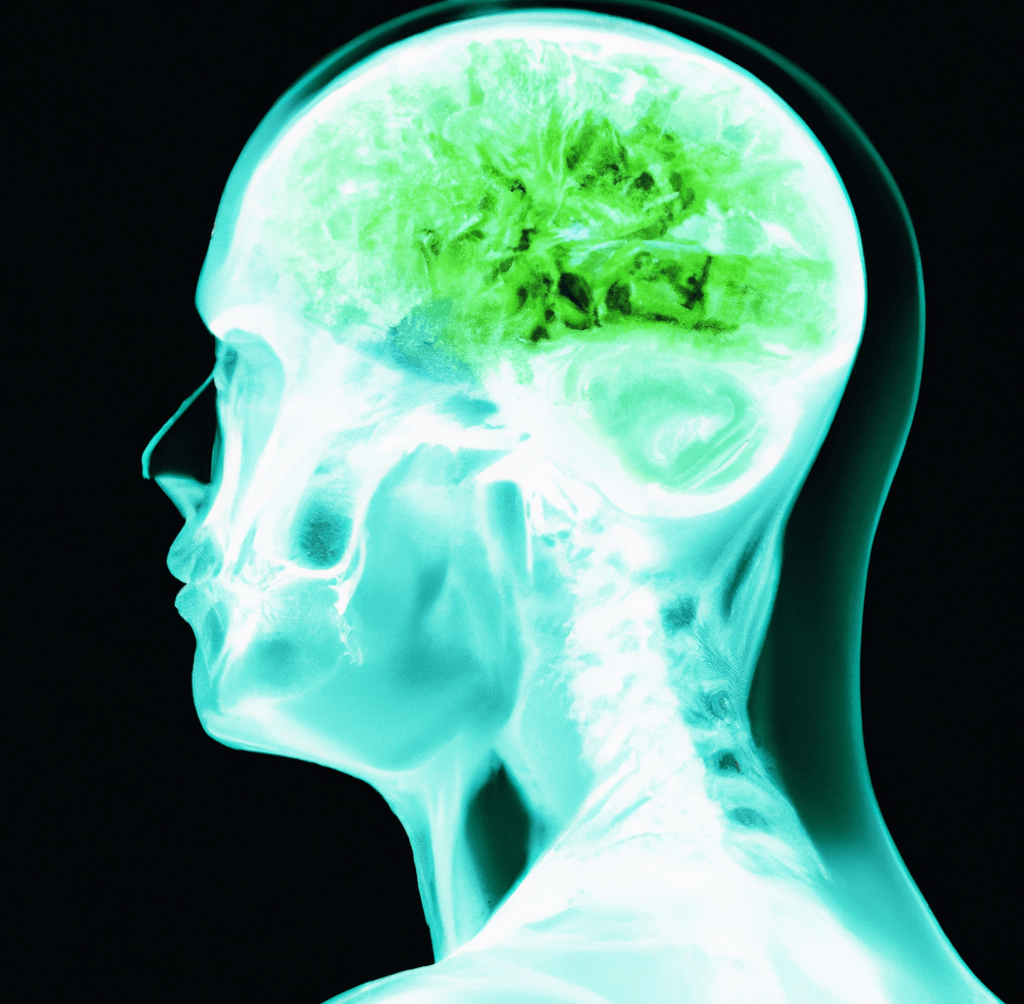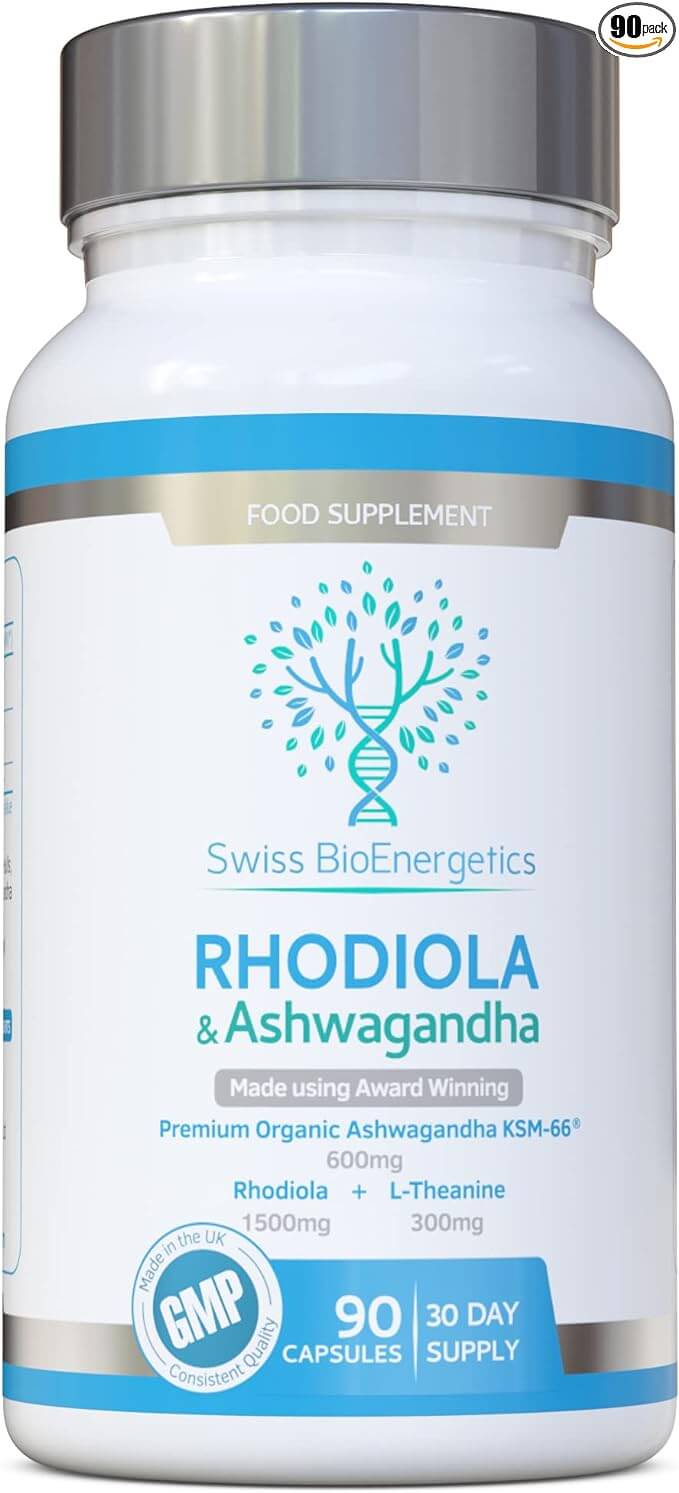Xanax | Natural Alternatives | Biohacking your body
5 November 2023 | James Kearslake
Table of Contents
Fun Fact
Did you know Xanax was first approved in 1981 and produced by the pharmaceutical company Upjohn (now part of Pfizer). It quickly gained popularity as an effective treatment for anxiety, but its widespread use now raises concerns about mass abuse and dependence by users.
What is Xanax
Xanax is likely one of them the more common drugs you hear prescribed for mental health conditions. Common across America, its name is widely used in films, books, and media.
Used to treat anxiety and panic attacks, it can be highly effective, but has a potential adverse side effects that users would prefer not to have, but are willing to tolerate in exchange for not suffering perpetual anxiety.
However, included in the side effects are the risks of dependence, and for many abuse of the drug. Sadly, overdoing on Xanax is possible and is used as a route to suicide for some.
Xanax addiction is more common than many realise, and because we see it as a prescribed drug, we’re more likely to tell ourselves that “we’re not addicted, it’s been prescribed to me” – we call this self-justification bias.
Unfortunately, just because a drug has been prescribed to us, doesn’t mean we can’t be addicted to it.
It’s therefore important to recognise if we’re becoming dependent on prescribed medication to tackle anxiety, but to also know that there are natural alternatives to medication that can alleviate anxiety without nasty side effects.
Natural alternatives can be foods and drinks which balance our internal system, or bring our bodies back to homeostasis. Some roots, like Rhodiola Rosea, or Ashgwanda, are adaptogens; adaptogens trigger an adaptation process within us which brings our hormone levels back into balance, reducing the stress hormones cortisol and adrenaline from our systems. With stress hormones reduced, we also experience a positive effect on our serotonin and dopamine levels, the neurotransmitters responsible for making us happy.
Other alternatives can be changes we make to our external environment which have a direct impact on our mood, for example walking in nature has been shown to reduce feelings of anxiety, the Vitamin D from sunlight lifts our mood thereby reducing anxiety, and spending just twenty minute by water also has a calming effect on our bodies.
Often, for those experiencing chronic anxiety, we are only aware of the prescribed medications available and aren’t guided on the alternatives available to us that can provide a powerful release from anxiety.

When Xanax is Prescribed
Xanax, is prescribed to treat a variety of anxiety-related disorders, including generalized anxiety disorder (GAD), panic disorder, and social anxiety disorder. Xanax works by enhancing the activity of a neurotransmitter called gamma-aminobutyric acid (GABA) in the brain, which reduces anxiety and promotes relaxation.
Xanax is typically prescribed when a person’s anxiety symptoms become debilitating, in that it affects their daily lives, home life, and/or ability to work. It can be an effective short-term solution for anxiety management, but for those living with long-term anxiety, it is better for your body to explore sustainable solutions, and begin looking at why you experience anxiety in the first instance.
Benefits of Xanax
- Rapid Relief from Anxiety – Xanax provides fast relief from anxiety symptoms, often within 20-30 minutes of ingestion.
- Short-term Solution – It is a helpful short-term option for managing acute anxiety and panic attacks, therefore can be beneficial for those going through a challenging period such redundancy, a break up, or bereavement.
- Improved Sleep – Because it induces drowsiness, it helps users with sleep. Although, I caveat that with it isn’t necessarily quality sleep – more on this below.
Side Effects of Xanax
- Dependence – Xanax has a high potential for dependence, both physical and psychological.
- Physical dependence – with continued use of Xanax, the body can grow a tolerance to the drug meaning the user needs more of it to achieve the same effect. Additionally, the longer someone remains on Xanax, the more difficult it is to stop as withdrawal symptoms intensify. You can see a long list of withdrawal symptoms further down the article (click here to head straight to them).
- Psychological dependence – users can also become dependent on Xanax to deal with life’s daily challenges as they arise, often needing Xanax ahead of, or after, a stressful event. This false sense of control makes the user think they’re coping with challenging events, but in fact they’re teaching themselves they are unable to deal with life’s challenges without the use of a prescribed drug. This dependence can become very risky as it makes it harder to encourage users off Xanax.
- Drowsiness – Xanax often causes drowsiness and dizziness, which can impact daily activities.
- Cognitive Impairment – It can impair daily cognitive function and memory, often making people feel sluggish and slow. Which itself is counterproductive to our mental health, as being productive, efficient, and achieving small wins each day is critical to managing anxiety.
- Withdrawal – Discontinuing Xanax can lead to intense and unpleasurable withdrawal symptoms, which includes an increase in anxiety and insomnia.
- Risk of Overdose – Misuse or overuse of Xanax can lead to respiratory depression and even overdose.
The side effects of the drug can be very challenging mentally and physically and so its important users try to stop taking Xanax as soon as they’re able to.
Consuming natural alternatives to reduce anxiety that do not come with these side effects, and armed with your anxiety management toolkit, offers you long-term, sustainable ways to manage your anxiety, in a way that is healthy for your body and mind.
Withdrawal Symptoms of Xanax
Depending how long users have been taking Xanax the withdrawal symptoms can vary from a small, few day withdrawal process, to a much longer, and rather intense withdrawal process.
For those who have come to be physically and psychologically dependent on Xanax, the withdrawal process can be extremely unpleasant for them and will be met with many physical and mental challenges. The intensity of the withdrawal can be of such strength that the user feels unable to go through it, and reverts back to take their usual daily dosage of Xanax. Unfortunately, the only way to come off Xanax is to go through the withdrawal, and the sooner it is done the easier it gets.
Withdrawal should only ever be done following your mental health professional’s official guidance, because each withdrawal is tailored to each user’s dosage, length of time on Xanax, and dependency level.
Common withdrawal symptoms include:
- Increased Anxiety – Xanax will never stop anxiety entirely, only understanding the psychological root cause of anxiety can bring us such fortune. Therefore, when coming off Xanax, it is likely that people will experience a return or increase in anxiety. This reinforces the need to instead look at the root causes of our anxiety, and use natural ways to calm this.
- Restlessness – with the increased anxiety and worry, and physical withdrawal symptoms from coming off the drug, comes an inevitable restlessness.
- Insomnia – with restlessness comes issues with sleep; if we haven’t replaced Xanax with natural ways to calm our body and mind, or activate our parasympathetic nervous system, what we call the rest and digest, we will be ill equipped to manage the restlessness which will impact our sleep patterns.
- Irritability – restlessness is also a common cause of irritability; when we’re restless we are often experiencing an overactive sympathetic nervous system, our fight or flight. Fight or flight floods our system with adrenaline and cortisol, the stress hormones that leave us anxious, restless, and irritable. Thus, the cycle continues.
- Low Mood – similar to irritability, the withdrawal symptoms, increased anxiety, an active sympathetic nervous system, and affected sleep, all adversely affect our mood.
- Heart Palpitations – a physical response as a result of coming from the medication, heart palpations are not an enjoyable side effect and can themselves trigger a new source of anxiety for people. When coming down from my SSRI’s (antidepressants), Fluoxetine, I experience two weeks of heart palpitations, muscle spasms, tremors, and severe tiredness. I never enjoy the sensation of the heart palpations.
- Muscle Tension – people can experience muscle tension as a physical withdrawal symptom from the drug, but also as a result of the heart palpitations, and increased anxiety.
- Muscle Spasms – some users also experience muscle spasms or twitches when coming off the medication. When coming off my SSRI’s I experience intense neurotransmitter dysregulation – more on this in the next bullet.
- Neurotransmitter Dysregulation – these are what I call ‘mental spasms’ or ‘mind spasms’. I will get physical twitches, like my legs or body suddenly kicking out, but it will always happen when entering a meditative or sleeping state, and I’m aware that the spasm is a dysregulation coming from the mind. We sometimes experience these when entering a sleep state and sit in the space between awake and asleep; when coming down from Xanax you may experience these more regularly.
- Headaches – as with many medications, headaches are a common withdrawal symptom. While headache tablets can help, your best option to limit the severity of the headache is natural sources of anti-inflammatories and foods rich in nutrients. I recommend pineapple, pineapple juice, fruits rich in vitamin C like lemon, lime, grapefruit and orange, and reach for the brain power of berries, which are rich in anti-inflammatories and vitamin C, as well as having compound that promote blood circulation throughout the body. Increase fresh oxygenated blood to the brain reduces inflammation and relieves symptoms.
- Sweating – a combination between increased heart palpitations, anxiety, and dysregulation of the autonomic nervous system can trigger the body into sweating.
- Tremors/Shakes – adaptations the body goes through during withdrawal also affects the central nervous system leading to tremors and shakes for some.
- Nausea/Vomiting – dysregulation of the autonomic nervous system can also lead to gastrointestinal issues leaving users feeling nauseas and even vomiting.
- Extreme Tiredness – extreme tiredness and fatigue is also a common symptom when coming from Xanax and other mental health medications. Similar to my experience coming off SSRIs’, a few days into the withdrawal process I can experience a severe tiredness that lasts two to three days. Irrespective of what I have planned, I will have to cancel everything and spend the days lay in bed eating and sleeping. It happens while the body is adjusting to functioning without the availability of the daily medication.
Xanax Impairing Cognitive Function
Because of its sedative and depressant effects on the central nervous system, Xanax can diminish cognitive function.
So although some high performers look to Xanax for reducing their anxiety and helping overcome challenging periods, the wider effects of Xanax may impede progress in other aspects of your life. Which itself leads to feelings of frustration, and even guilt, as we feel we’re not performing to the best of our capability.
How Xanax can impede cognitive function:
- Drowsiness – Xanax has a sedative effect, which means it can make individuals feel drowsy and lethargic. This drowsiness can affect alertness and concentration, making it challenging to stay focused and think clearly.
- Memory Impairment – Benzodiazepines, including Xanax, have been associated with memory impairment. Short-term memory can be particularly affected, making it difficult to remember recent events or information.
- Slowed Reaction Time – Xanax can slow down reaction times, which can be problematic, especially in situations that require quick decision-making and motor skills, such as driving or operating heavy machinery.
- Confusion – Xanax can lead to feelings of confusion or disorientation, particularly at higher doses. Individuals may have difficulty processing information or understanding their surroundings.
- Reduced Problem-Solving Skills – The sedating effect of Xanax can make it challenging to solve problems or think critically. This can hinder the ability to make sound judgments and decisions.
- Difficulty Concentrating – Concentration and attention span can be impaired while under the influence of Xanax. It can be challenging to focus on tasks or conversations.
It’s important to note that the cognitive impairments associated with Xanax are usually pronounced at higher doses or when the drug is used disproportionately. For some individuals, effects can be temporary and improve as the drug’s effects wear off, however, long-term or excessive use of Xanax can lead to persistent and enduring cognitive deficits that affect many areas of your life.
Overdosing from Xanax
It is possible for people to die from an overdose of Xanax.
Overdosing on Xanax can lead to respiratory depression, which means that a person’s breathing can become slow, shallow, or even stop altogether. When the respiratory system is significantly impaired, it can result in a lack of oxygen in the body, leading to severe health complications, including death.
The risk of overdose is especially high when Xanax is taken in combination with other substances, such as alcohol or opioids, as these can enhance the depressant effects of the drug.
Mixing Xanax with other substances can be particularly dangerous and increases the risk of overdose.
If you suspect someone has overdosed on Xanax or any other medication, it is essential you get medical attention immediately by contacting emergency services.
Natural Alternatives to Xanax
Fortunately, there are several natural alternatives to Xanax that can help manage anxiety without the risks associated with prescription medications. Here is a list of natural remedies:
- Lavender Essential Oil
- Benefits – Lavender oil is known for its calming and soothing properties. It can be used in aromatherapy or applied topically to reduce anxiety and improve sleep.
- Side Effects – Generally safe, but some individuals may be sensitive to the fragrance.
- Valerian Root
- Benefits – Valerian is a herb that promotes relaxation, reducing symptoms of anxiety, and creating a sense of calm within our system.
- Side Effects – Potential side effects include dizziness and drowsiness, especially when taken in high doses.
- Recommendation – It’s better spending on a quality product so that you get the full extent of its benefits. We drink Dr Stuart’s Valerian Tea.
- Chamomile Tea
- Benefits – Chamomile tea is a mild sedative that can help with anxiety and sleep.
- Side Effects – It is rare allergies occur with chamomile.
- Recommendation – similar to valerian tea, purchase a higher quality tea to ensure you’re getting the benefits from it. Value range teas lack the nutritional benefits of high grade teas
- Rhodiola Rosea
- Benefits – Also a plant, rhodiola rosea is known as an adaptogen which means it brings the body’s hormones back to homeostasis, reducing cortisol and adrenaline throughout the body. It also increases mental clarity and cognitive performance. I take rhodiola rosea myself to reduce my anxiety and prevent depressive episodes.
- Side Effects – side effects are limited with rhodiola rosea but new users may experience a high for a few days which might limit the ability to sleep. New users should start with half doses to prevent this.
- Read the full article on rhodiola rosea and its benefits here
- Ashwagandha
- Benefits – also an adaptogen with the ability to bring the body back to homeostasis, ashwagandha can reduce anxiety, help lift mood, and increases physical energy, stamina, and the libido.
- Side Effects – new users may experience a high that prevent them sleeping. New users should always start with half doses
- Read the full article on ashwagandha and its benefits here
- Anandamide
- Benefits – directly increases serotonin levels and serotonin uptake in the brain.
- Side Effects – Research is still emerging so long-term use may have unknown undesired side effects.
- Read the full article on Anandamide and its benefits here
- Passionflower
- Benefits – Passionflower is plant that can reduce anxiety and improve sleep quality.
- Side Effects – Rare side effects may include dizziness and confusion.
- Read the full article on passionflower and its benefits here
- Kava Kava
- Benefits – Kava kava is a plant that has been taken for centuries for its sedative, anxiety-reducing, and social relaxation capabilities.
- Side Effects – Excessive use can lead to liver toxicity, so it should be used cautiously and sparingly.
- Read the full article on kava and its benefits here
- Diet and Nutrition
- All diets need to be well balanced and rich with omega-3 fatty acids which support brain health. Magnesium-rich foods can also positively impact mood and anxiety. The Mediterranean diet is known for being the best diet for maintaining brain health, which is a foundation to positive mental health.
- Read the full article on magnesium malate and its benefits here
- Exercise
- Regular physical activity can reduce anxiety, release endorphins, and improve overall mental wellbeing. It should be a key part of everyone’s anxiety management toolkit as it is one of the most effective ways to expend cortisol and adrenaline building up in the system from anxiety.
- Yoga
- Most struggle to understand how yoga benefits mental health, instead people think we do yoga to improve flexibility. The essence of yoga is about positive wellbeing, spirituality, and enlightening our lives through love, compassion, and gratitude towards others. The subtle yet significant changes yoga brings to our lives can have overall effects to wellbeing and mood. There are various forms of yoga, so it’s important to find a style which suits your preference so yoga can remain something you practice a few times a month.
- Meditation
- Contrary to common understanding, meditation is very different from yoga. Although yoga incorporates meditative practice, meditation is a standalone practice from yoga. There are many forms of meditation, but most aim to still the mind and body, and help us activate our parasympathetic nervous system, or ‘rest and digest’. The system is responsible for calming the body, reducing anxiety, and preventing the increase of cortisol or adrenaline.
What is Passionflower
Passionflower is a plant native to North America and is well-known for its beautiful and intricate flowers. While passionflower is appreciated for its aesthetic qualities, it has also been used for centuries for its potential therapeutic benefits.
The parts of the passionflower plant, including the leaves, stems, and flowers, are used to make herbal remedies and dietary supplements. Passionflower has a long history of traditional use in herbal medicine, primarily for its calming and sedative properties.
Common uses of passionflower include:
- Anxiety and Insomnia – Passionflower is often used to alleviate symptoms of anxiety, stress, and insomnia. It can promote relaxation and improve sleep quality.
- Sedation – It has mild sedative effects, which can be helpful for individuals with mild anxiety or restlessness.
- Nervous System Support – Some people use passionflower to support their nervous system and help manage symptoms associated with anxiety disorders or nervousness.
- Pain Relief – In some traditional herbal medicine practices, passionflower has been used to relieve pain and discomfort.
It’s important to note that while passionflower is generally considered safe when used as directed, it may interact with certain medications or have side effects for some individuals. It’s advisable to consult with a healthcare professional or herbalist before using passionflower as a treatment, especially if you are pregnant, nursing, or taking other medications.
Passionflower is available in various forms, including herbal teas, tinctures, capsules, and extracts. The appropriate form and dosage may vary depending on the specific health concern being addressed, so seeking guidance from a healthcare provider or herbalist is recommended to ensure safe and effective use.
What is Kava Kava
Kava kava, often simply referred to as “kava,” is a plant native to the South Pacific region, including Polynesia, Fiji, and other Pacific Island nations. Kava has been used for centuries in traditional Pacific Island cultures for its sedative, anxiolytic (anxiety-reducing), and social relaxation properties.
The root of the kava plant is the part used to prepare a traditional beverage, also called “kava,” which is made by grinding or pounding the root into a powder and then mixing it with water. The resulting drink has a distinctive, earthy taste and is known for its calming effects. It is traditionally consumed in social and ceremonial settings, often as a way to promote relaxation, social bonding, and alleviate stress and anxiety.
Common uses of kava kava include:
- Anxiety and Stress Relief – Kava is well-known for its anxiolytic properties. It can reduce symptoms of anxiety, promote relaxation, and induce a sense of well-being.
- Mild Sedation – Kava has mild sedative effects and is used to help individuals relax and unwind.
- Muscle Relaxation – Some people use kava to alleviate muscle tension and discomfort.
- Social and Ceremonial Use – In Pacific Island cultures, kava has been traditionally used in social gatherings and rituals to facilitate relaxation and communal bonding.
It’s important to note that while kava can be a useful natural remedy for anxiety and stress, it should be used with caution. Overconsumption of kava or using it inappropriately can lead to side effects, including dry skin, yellowing of the skin, a condition called ‘kava dermopathy’, and potential liver toxicity.
Due to these concerns, several countries, including some European nations and Canada, have restricted or banned the sale of kava products.
Final Thoughts
In conclusion, Xanax is a potent medication for managing anxiety, but it comes with a range of side effects and risks.
Natural alternatives offer a holistic approach to anxiety management with fewer potential downsides.
However, it’s crucial to consult with a healthcare professional before making any changes to your anxiety management routine to ensure it’s safe and appropriate for your specific needs and circumstances.
Who is James Kearslake?
Having been biohacking my mind and body long before it became fashionable, I’ve always lived by the benefits of nature’s resources to improve cognitive and physiological performance. Using my years of experience, products, and wellness practices, I’m now helping others elevate their cognitive performance to help build the life they want. I save you the time I’ve spent learning, so you can focus your time on building.
Proudly AI Supported
I proudly use AI to support development of my articles. As a heavily dyslexic person, writing can be a time consuming process with words often jumbled up and sentences the wrong way round. AI has become my crutch; allowing me to share the immense interest in my mind, while making content creation quicker and more accurate. AI is my benefit.
with Amazon Prime
Naturally calming valerian root
with Amazon Prime
with Amazon Prime
More natural ways to alleviate anxiety...
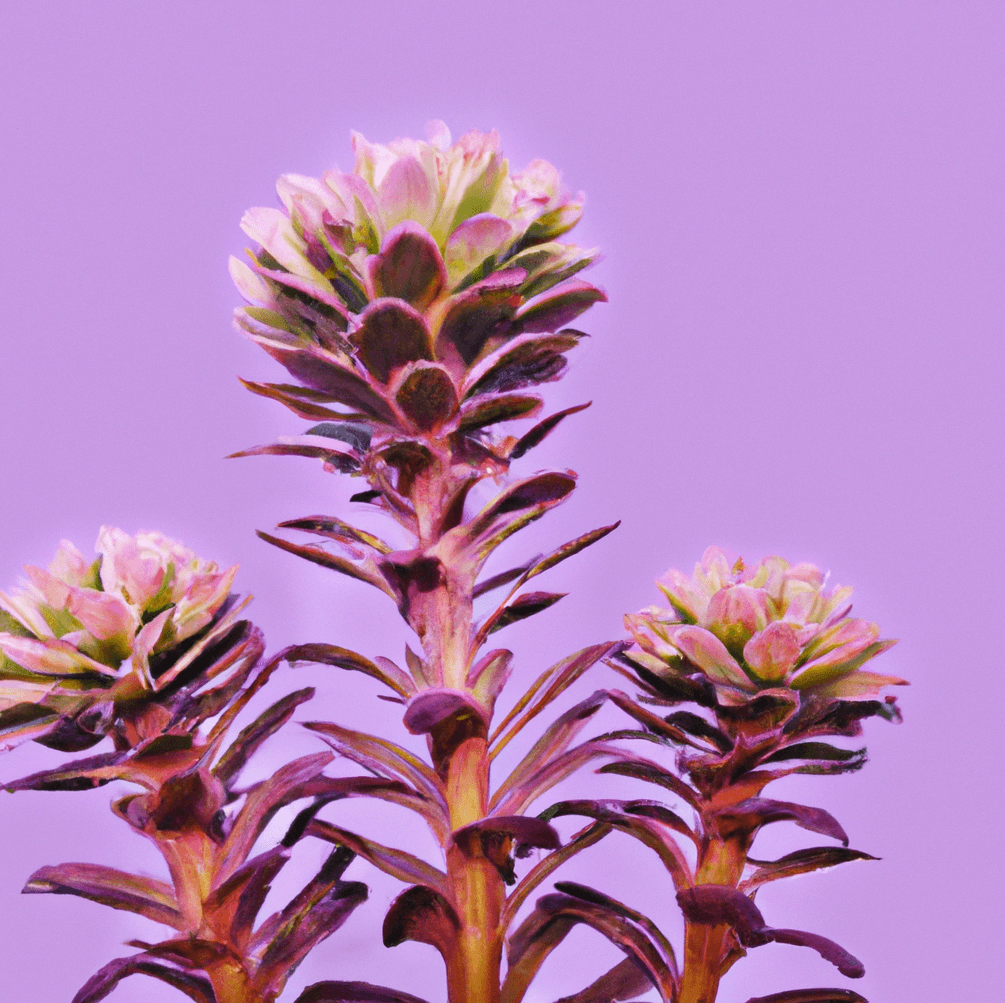
Reducing my anxiety and depressive episodes, rhodiola rosea transformed my life | Read the full article here
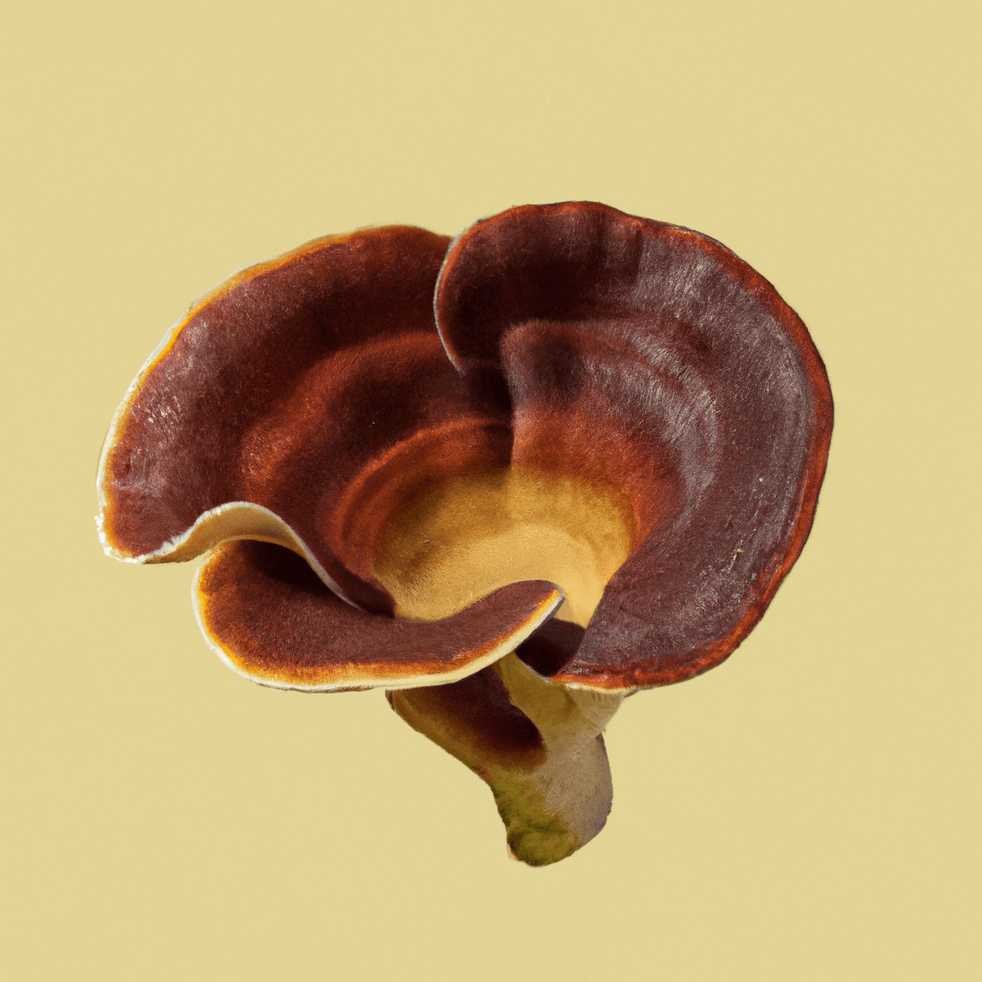
Fast becoming known for inducing quality sleep, reishi mushroom can bring the central nervous system to stillness, calmly, and quickly | Read the article in full here
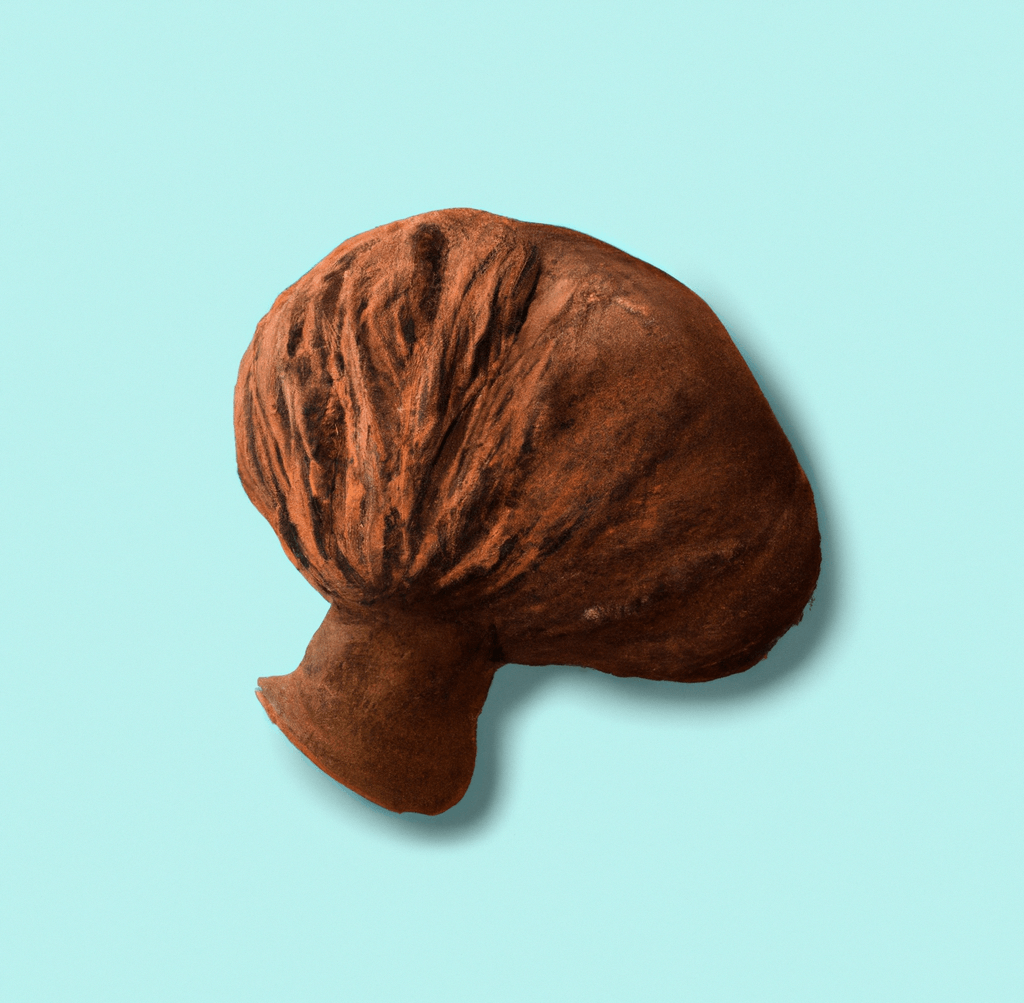
Chaga mushroom is the fungi fighting the nasties inside you. Packing punch for your immunity, it has superior qualities | Read the full article here

Lions mane supplement is fast becoming known as the fungi for elevating cognitive performance to superior levels | Read the full article here
Did you find this useful?
If so, please do share it with others who may also benefit from it.
Affiliate Policy
We only ever recommend products we know offer value to our readers and that we use ourselves.
When recommending these products, we often include affiliate links so that we earn a small commission on sales made, at no expense to you as the reader.
Affiliate commissions are similar to an advertising fee which retailers pay to website owners, and is often the only way website owners can earn money through the content they create. Therefore, we hope you can support us by using our affiliate links if you decide to purchase products after reading our content, as it helps keep the website operating.
Thank you for always sticking by us, and don’t forget to join our newsletter to get ground-breaking content direct in your inbox.
